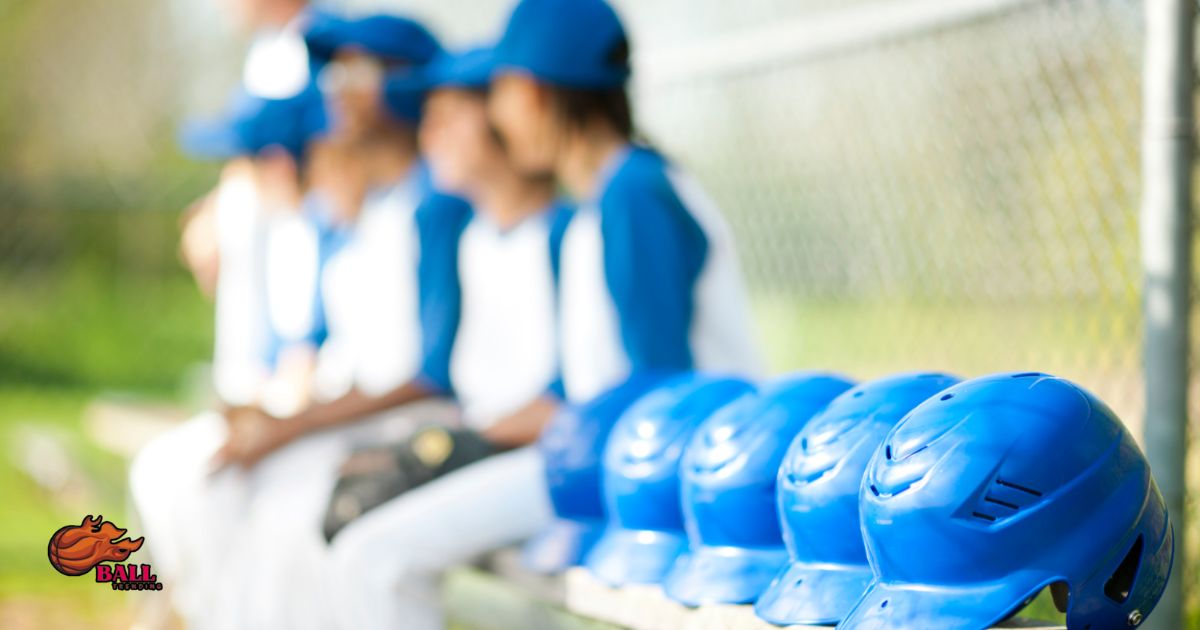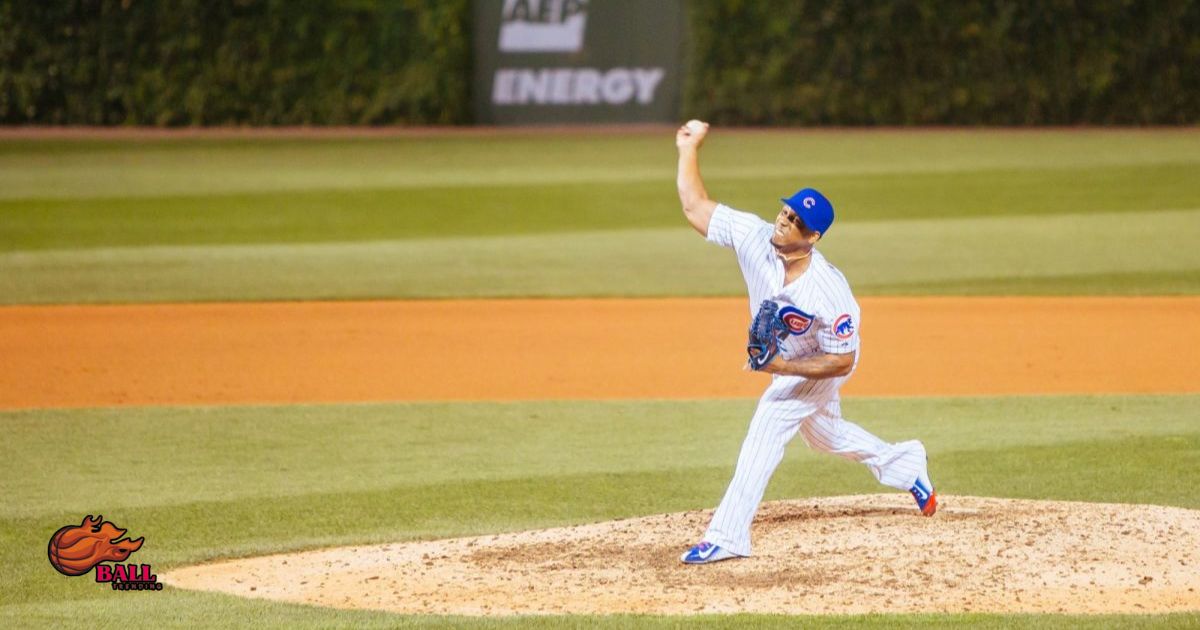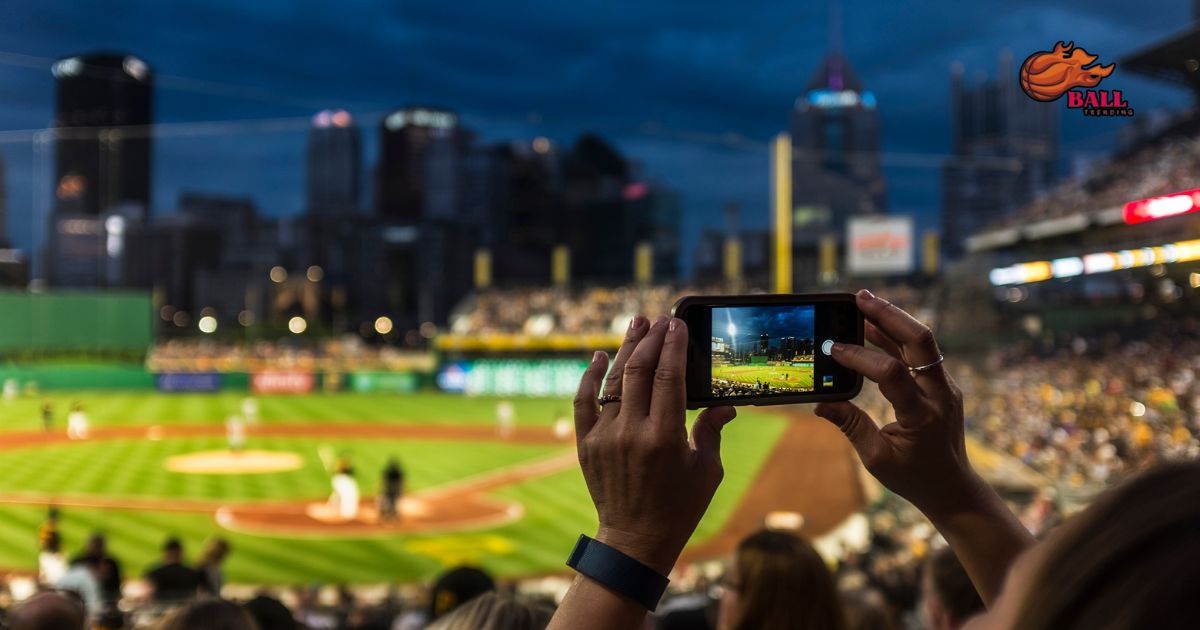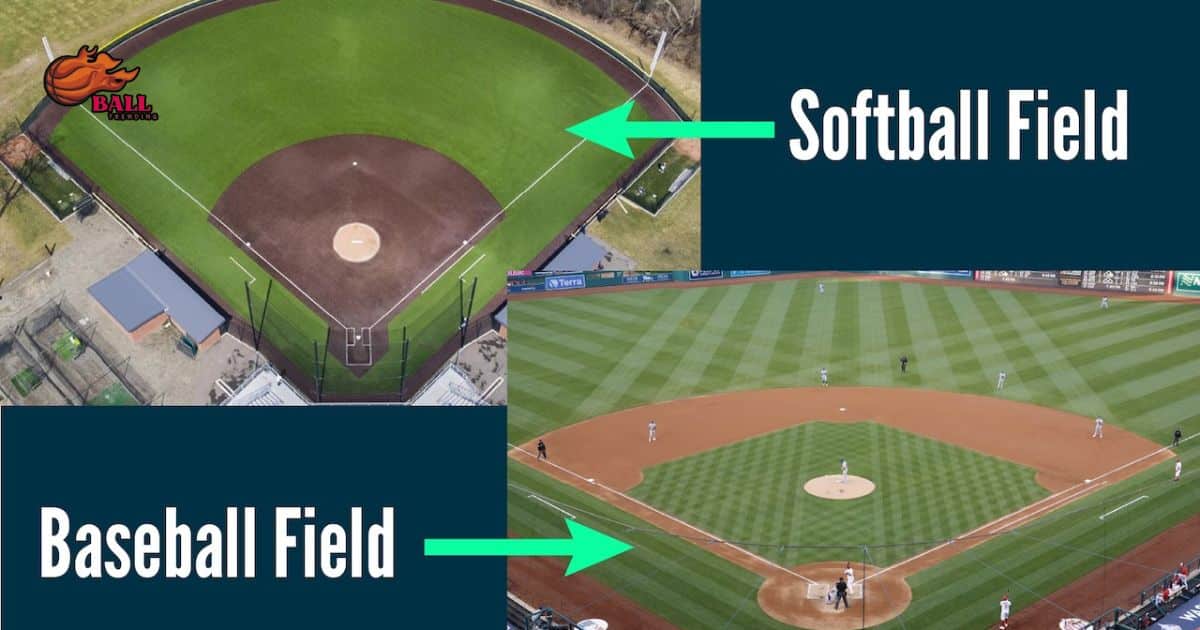Baseball and softball, two closely related sports, have distinct differences in popularity. While both sports offer opportunities for competition and enjoyment, baseball has consistently emerged as the more popular choice. This phenomenon can be attributed to several factors that have shaped the perception and reception of these sports in society. In this article, we will explore the reasons behind baseball’s greater popularity, ranging from historical significance and cultural influence to gender stereotypes and media coverage.
We will delve into the impact of professional leagues, scoring and gameplay, tradition and nostalgia, sponsorship and financial support, as well as fan engagement and experience. By understanding these factors, we can gain insight into why baseball has garnered a larger following and foster a sense of belonging among its enthusiasts.
Key Takeaways
- Baseball’s long and rich history, iconic figures, and global popularity contribute to its greater popularity compared to softball.
- Gender stereotypes and media coverage play a significant role in perpetuating the perception of baseball as the more prestigious and popular sport, marginalizing softball and its athletes.
- The presence of professional leagues, dedicated facilities, and extensive media coverage further enhance baseball’s appeal and sense of belonging among fans.
- Equipment differences, scoring/gameplay complexities, and the nostalgic appeal of baseball also contribute to its greater popularity over softball.
Historical Significance

The historical significance of baseball surpasses that of softball in terms of cultural impact and global recognition. Baseball has a long and rich history, dating back to the mid-19th century, when it was first played in the United States. It quickly gained popularity and became an integral part of American culture, symbolizing the ideals of teamwork, perseverance, and fair play.
Over the years, baseball has evolved into a global sport, spreading to countries like Japan, the Dominican Republic, and Cuba, where it has become deeply ingrained in their respective cultures. The sport has also produced iconic figures such as Babe Ruth, Jackie Robinson, and Derek Jeter, who have left an indelible mark on the collective consciousness of not just baseball fans, but sports enthusiasts worldwide. The historical significance of baseball serves as a unifying force, bringing people together through a shared love and appreciation for the game.
Cultural Influence
Baseball’s cultural influence extends far beyond its historical significance, shaping societal norms, inspiring literature and film, and infiltrating popular culture in various forms. This influence can be seen in the way the game has become ingrained in our everyday lives, from the language we use to the symbols we recognize. To illustrate this point, let’s take a look at a table that highlights some of the ways baseball has influenced our culture:
| Cultural Influence of Baseball | Examples |
|---|---|
| Language | Phrases like “home run” and “strike out” have become part of our everyday vocabulary. |
| Symbols | The baseball cap has become a fashion statement, worn by people of all ages and backgrounds. |
| Literature and Film | Countless novels, movies, and documentaries have been inspired by the game, showcasing its impact on society. |
| Popular Culture | Baseball has infiltrated music, art, and advertising, further cementing its place in our collective consciousness. |
As we can see, baseball’s cultural influence is undeniable and continues to shape our world. This influence also extends to the realm of gender stereotypes, which will be explored in the next section.
Gender Stereotypes
Gender stereotypes in baseball and softball play a significant role in shaping perceptions and opportunities for athletes. These stereotypes perpetuate traditional gender norms and create barriers for female athletes in the world of sports. Here are three ways in which gender stereotypes impact baseball and softball:
- Limited opportunities: Stereotypes often dictate that baseball is a “boys’ sport” and softball is a “girls’ sport,” leading to fewer resources and opportunities for female athletes in softball compared to their male counterparts in baseball.
- Media representation: Mainstream media tends to focus more on male athletes and their achievements in baseball, reinforcing the notion that baseball is the more prestigious and popular sport.
- Social expectations: Gender stereotypes influence societal expectations of how athletes should behave and perform. This can lead to biased evaluations of female athletes’ skills and abilities, creating additional obstacles for them to overcome.
The perpetuation of these gender stereotypes hinders progress towards gender equality in sports and prevents talented female athletes from receiving the recognition and opportunities they deserve. It is crucial to challenge and break down these stereotypes to create a more inclusive and equitable sporting culture.
Media Coverage
With a skewed focus on male athletes, media coverage of baseball perpetuates its popularity over softball. The prevailing narrative in sports media often emphasizes the achievements and stories of male baseball players, creating a sense of belonging and connection for fans who identify with them. This skewed coverage not only reinforces the perception that baseball is the superior sport but also marginalizes softball and its athletes.
The lack of media attention given to softball makes it harder for the sport to gain a wider audience and attract sponsors. By perpetuating this gender bias, the media contributes to the continued popularity of baseball at the expense of softball. To create a more inclusive and equal sports landscape, it is crucial for the media to provide balanced coverage and showcase the accomplishments of female athletes in both baseball and softball equally.
Professional Leagues
The professional leagues in baseball and softball play a significant role in shaping the popularity of the two sports. Here are three reasons why the professional leagues contribute to the appeal and sense of belonging among fans:
- High level of competition: Professional baseball leagues, such as Major League Baseball (MLB), showcase the best players in the world, which attracts fans who appreciate the skill and talent displayed on the field. Softball, on the other hand, has fewer professional leagues and therefore lacks the same level of competition.
- Historical significance: Baseball has a rich and storied history, with iconic teams and players that have become part of the sport’s folklore. This historical significance creates a sense of tradition and nostalgia that resonates with fans.
- Media coverage: Baseball receives more media coverage, both in terms of televised games and news coverage, which helps to increase its popularity and exposure to a wider audience.
As we explore the influence of professional leagues, it becomes evident that youth development programs also play a crucial role in shaping the popularity of baseball and softball.
Youth Development Programs

Youth development programs play a crucial role in shaping the popularity and future success of both baseball and softball. These programs provide young athletes with the opportunity to learn the fundamentals of the sport, develop their skills, and foster a sense of belonging and camaraderie. By participating in these programs, young players not only gain a deeper understanding of the game but also build lasting relationships with their teammates and coaches.
The emphasis on teamwork, discipline, and sportsmanship in youth development programs helps instill valuable life lessons that extend beyond the field. Additionally, these programs serve as a pipeline for talent, identifying and nurturing young athletes who have the potential to excel at higher levels of competition. Investing in comprehensive and accessible youth development programs is essential in ensuring the sustained popularity and success of both baseball and softball.
Accessibility Of Facilities
Facilities accessibility plays a significant role in the difference in popularity between baseball and softball. The availability and quality of facilities can greatly influence the level of interest and participation in a sport. In the case of baseball, there are generally more dedicated fields and stadiums that cater specifically to the needs of the sport. This accessibility advantage contributes to the popularity of baseball over softball.
Here are three reasons why accessibility of facilities is important:
- Infrastructure: Baseball fields are more prevalent, with dedicated stadiums and facilities that provide a better experience for players and spectators.
- Training: Accessible facilities allow players to practice and train more frequently, leading to improved skills and performance.
- Visibility: The presence of dedicated facilities for baseball increases its visibility and exposure, attracting more attention and support from the community.
Improving the accessibility of facilities for softball could help bridge the popularity gap and create a more inclusive environment for both sports.
Equipment Differences
Equipment plays a significant role in distinguishing the differences between baseball and softball. While both sports share similarities in terms of the basic equipment needed, such as bats, balls, and gloves, there are key differences that set them apart. One of the main differences lies in the size and weight of the equipment. Softball bats are shorter and lighter compared to baseball bats, making them easier to handle and swing.
Softballs are also larger and less dense than baseballs, allowing for easier contact and reducing the risk of injury. Additionally, softball gloves have a deeper pocket and a larger surface area, designed to accommodate the larger size of the softball. These equipment differences contribute to the unique playing experience and strategies in each sport, further shaping their distinct identities.
Scoring And Gameplay
Analyzing the scoring and gameplay of baseball and softball reveals distinct characteristics that contribute to the greater popularity of baseball. Here are three key factors that make baseball more appealing to a wide audience:
- Strategy and complexity: Baseball is known for its intricate strategies and complex gameplay. The strategic elements, such as pitch selection, base running, and defensive positioning, add depth and excitement to the game. Softball, on the other hand, is often seen as a simpler and more straightforward sport.
- Pitching and hitting dynamics: Baseball pitchers throw from a longer distance and at faster speeds, making it more challenging for batters to hit the ball. This dynamic creates a sense of anticipation and excitement, as every pitch can potentially be a game-changing moment. The pitching dynamics in softball are generally slower, resulting in a different level of intensity.
- Professional leagues and historical significance: Baseball has a long and storied history, with major professional leagues like MLB capturing a worldwide audience. The rich tradition and iconic moments associated with baseball contribute to its popularity. Softball, while also having its own professional leagues, does not have the same level of historical significance and cultural impact.
These factors combined make baseball a sport that offers a greater sense of complexity, anticipation, and historical significance, which resonates with an audience seeking a sense of belonging and connection to the game.
Tradition And Nostalgia

One key factor that contributes to the greater popularity of baseball over softball is the deep-rooted tradition and nostalgic appeal of the sport. Baseball has a rich history that spans over a century, with iconic teams, legendary players, and memorable moments ingrained in the collective consciousness of fans. The sport evokes a sense of belonging and connection to the past, creating a strong bond among its followers.
One way to understand the impact of tradition and nostalgia in baseball is to compare it to softball. Here is a table that highlights some key differences between the two sports:
| Baseball | Softball |
|---|---|
| Longer history | Shorter history |
| Played on a larger field | Played on a smaller field |
| More widely recognized and celebrated | Less recognized and celebrated |
The tradition of baseball is deeply ingrained in American culture, with its iconic stadiums, such as Yankee Stadium and Fenway Park, becoming hallowed grounds for fans. The crack of the bat, the smell of fresh-cut grass, and the sight of players in classic uniforms all contribute to the nostalgic appeal of baseball. This sense of belonging and connection to the past is what sets baseball apart and makes it more popular than softball.
Sponsorship And Financial Support
The greater availability of sponsorship and financial support is another significant factor contributing to the higher popularity of baseball compared to softball. This financial backing allows baseball to invest in various aspects that enhance the overall experience for both players and fans. Here are three reasons why sponsorship and financial support make a difference:
- Higher salaries: Baseball players typically receive higher salaries than softball players, attracting top talent and creating a more competitive league.
- Better facilities: With more financial resources, baseball teams can afford state-of-the-art stadiums and training facilities, providing a superior playing environment.
- Marketing and promotions: Baseball benefits from extensive marketing campaigns and sponsorships, creating a stronger brand presence and attracting a larger fan base.
With greater sponsorship and financial support, baseball can offer a more enticing fan experience, leading to its continued popularity. Now let’s explore the next section on fan engagement and experience.
Fan Engagement And Experience

Fan engagement and experience play a crucial role in the enduring popularity of baseball, as it creates a deep connection between spectators and the game. Baseball offers fans a sense of belonging and community, fostering a shared passion that transcends individual differences. The experience of attending a baseball game, whether in a stadium or watching from home, is a multi-sensory delight.
The sights and sounds of the ballpark, the smell of freshly cut grass, and the taste of hot dogs all contribute to the immersive nature of the sport. Moreover, baseball’s rich history and traditions provide fans with a sense of nostalgia and continuity, further strengthening their emotional attachment. The opportunity to witness extraordinary athletic feats and be part of the collective energy of a crowd adds to the overall fan experience, making baseball more than just a game but a cherished cultural institution.
FAQ’s
Why is a baseball harder to hit than a softball?
Softball can be harder because of the smaller field. It gives batters less time to hit the ball, even though baseballs are faster. Speed and distance matter, but they’re not the most important factors.
Why baseball is the hardest sport in the world?
Doing this requires great timing, precision, and hand-eye coordination. It makes it possibly the toughest skill in any major sport.
Is softball a rough sport?
Softball players can get hurt from balls, collisions, and overuse, leading to injuries. It includes tendinitis and pain in the back, neck, shoulder, and elbow. Staying safe involves avoiding hard-hit balls, wild pitches, and being cautious on the base paths.
Which sport is softball most like?
Softball comes directly from baseball, so if you watch one, the other looks pretty similar. However, there are some important rule differences between the two.
Conclusion
In conclusion, it is truly remarkable how baseball, despite its numerous advantages and opportunities, manages to remain more popular than softball. While one might expect the sport with a larger player base and higher media coverage to dominate, the irony lies in the enduring appeal of tradition and nostalgia. Despite the progress made in challenging gender stereotypes and promoting equality, baseball’s historical significance and cultural influence continue to captivate fans, ensuring its enduring popularity.








